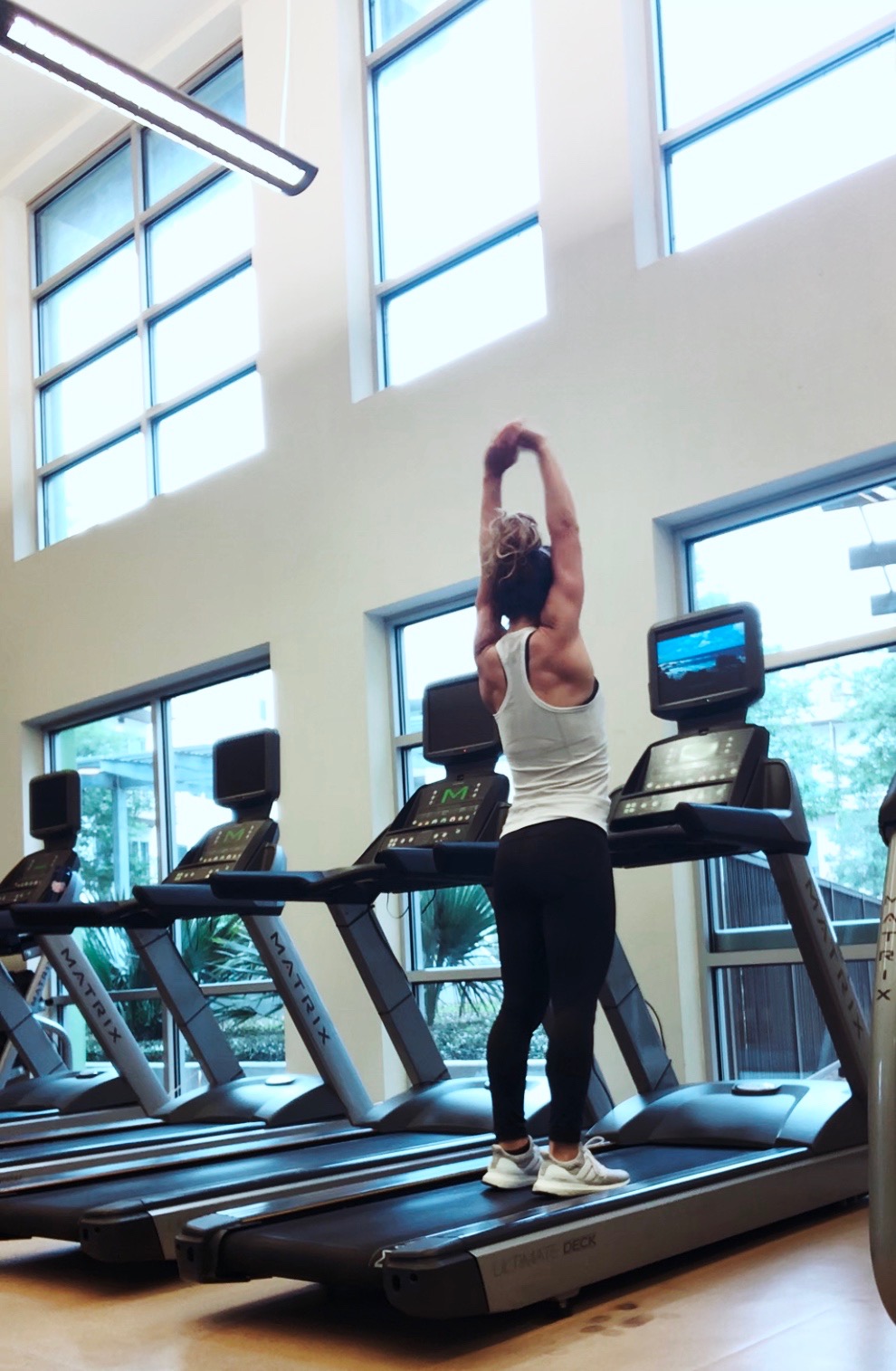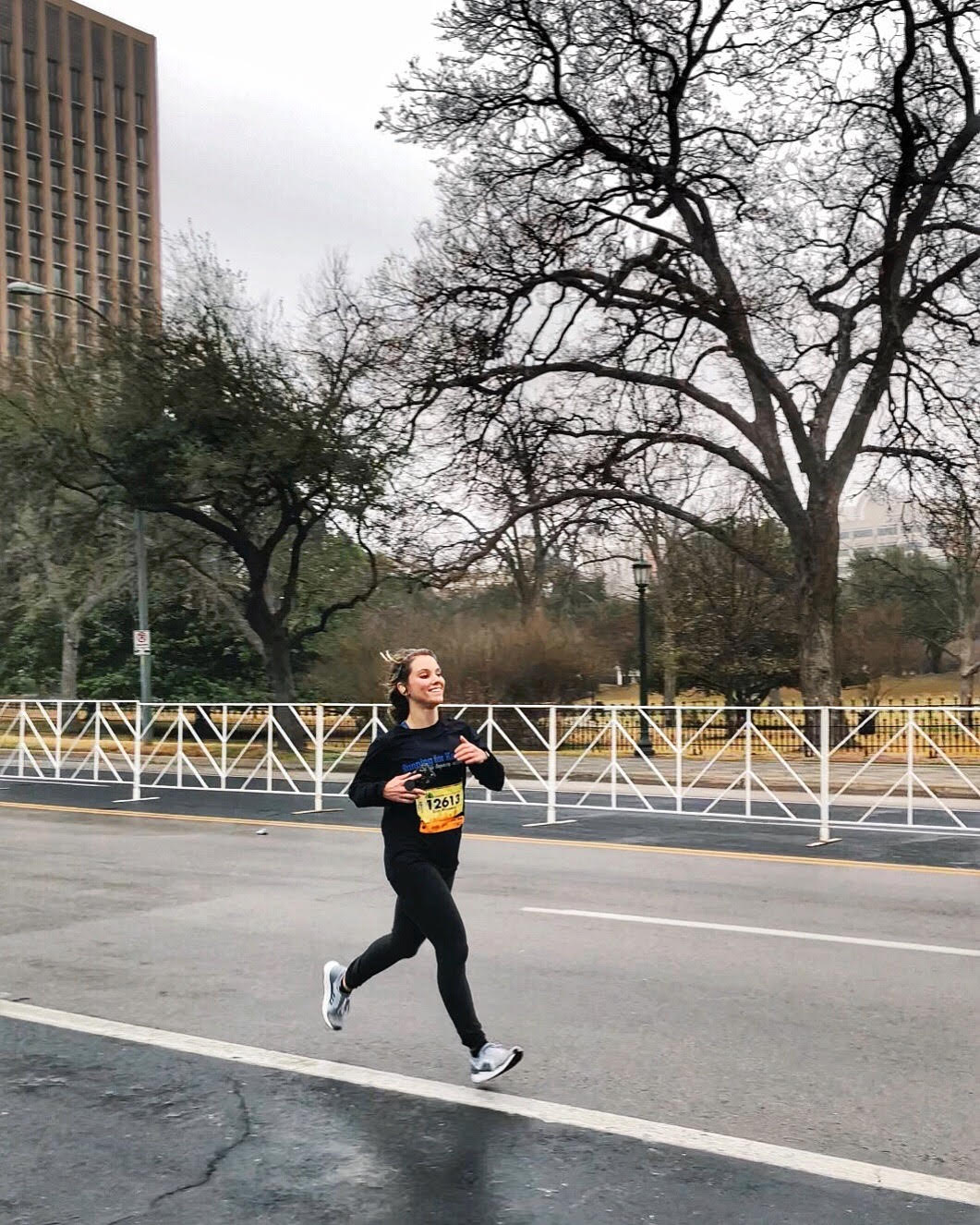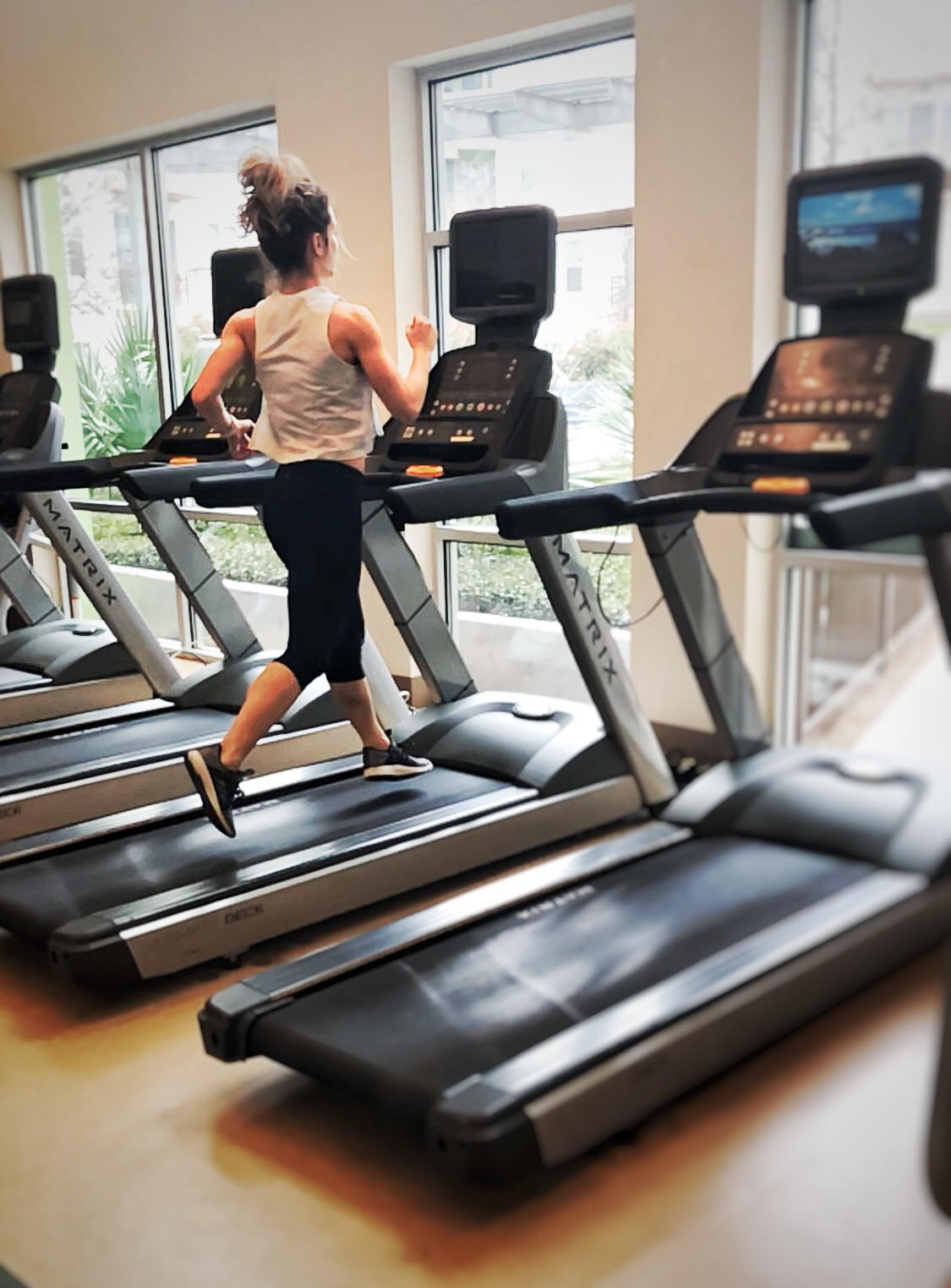Questions about running (and the treadmill)
To start this off I just want to say, I was NEVER a runner. I didn’t run in high school, I didn’t play sports in college… I was a dancer and I grew up with the idea that ballerinas don’t run. It wasn’t until I entered college, stopped competitively dancing and needed some other physical outlet, that I started running to fill the void that dance always was for me. I mention this because I want to remind you that you must be a beginner before you are anything else. If you’ve never run before, never worked out before, never stepped foot in a gym or a group fitness class, it’s okay. Start wherever you are.
I remember feeling helpless when it came to exercises in the gym, so the treadmill was the only piece of equipment that was intuitive enough to get on and do my thing without feeling the pressure of needing some planned workout. Was it boring? Yes, but it was a way for me to zone out and mentally focus on this one thing that I knew I could do if I kept trying. I’d push myself to run longer, run faster, and then eventually I felt confident enough to run outdoors. I started developing a real passion for it as I could feel myself getting stronger and better, and next thing you know, I was signing myself up for half marathons.
Today, I keep running in my life because it’s grown to be one of my passions and favorite hobbies, but it also reminds me that zero is just a starting point.
Through countless hours spent on running forums, reading through running magazines and scientific articles, and talking to other runners, I've always felt at kind of a loss when it comes to the right recipe for my own running improvement. I like to do ALL kinds of fitness things, so the hardcore running regimens and strict weekly schedules never worked for me. Instead, I've gradually been creating my own versions of interval workouts and have used the treadmill as a tool to improve. I share them on my page as I do them, but I am also in the works of putting them all together in the form of an accessible guide for anyone that may relate to those feelings.
In the meantime, I'm answering some of the most common questions I get about running and the treadmill here:
Q1: Can you train for an outdoor race mostly on the treadmill?
In my opinion, it can be done. However, I strongly suggest incorporating outdoor training runs when possible (ideally once per week). The treadmill can be effective for improving speed and endurance, but there are other factors associated with outdoor running (hills, gravel, uneven surfaces, wind resistance, etc.) that you want to be prepared for on race day.
Q2: What is the methodology behind the speeds and intervals on my running drills?
Every workout I create has a different intention. Some are more focused on pushing pace for longer periods of time, while others are just for high intensity interval training and circle through periods of intense and lighter work. To improve, I've found a mix of tempo runs (slightly faster than goal race pace), HIIT drills, heart rate zone training, and steady-state endurance runs work best. Intervals are adjusted according to the goal of the particular workout.
Q3: If you're training for a race, should you be trying to increase your speed a little every time you use the treadmill?
In my opinion, no. I did not always used to have this mindset, though. I previously thought there was no point in a training run if I wasn't pushing myself to exhaustion. More research and personal trial and experimentation has changed my perspective on this. If training competitively, I do believe it's important to challenge yourself with your pace when you can, but it doesn't have to be for long periods of time and it certainly does not have to be for every single training run. Too much intensity can lead to injury, fatigue, and straight up burnout.
Q4: Are the drills meant to have any rest periods in between?
The workouts I share on IG are not structured for any rest unless I explicitly state jog/walk or rest. But you do YOU.. If you want to rest, give yourself a break (especially if you're just using them as a way to spice up your cardio).
Q5: Have I ever had pain from running?
100%. I don't want to go into too much detail on all the potential causes of pain because I'm not a medical expert and pain is a very broad topic, but from personal experience, pain can be from a number of issues including: running too hard too often, increasing intensity too quickly (increasing mileage or speed), bad shoes, poor form, or a weak core and posterior chain.
Long story short - slow is smooth, smooth is fast. Think smart. Retire your old running shoes. Check your form (shoulders over hips, foot strike, etc.) Warm up before your run. Stretch after your run. Don't neglect the importance of strong muscles and other exercises that can be done to benefit your running.
Q6: How should the drills be adjusted if someone is not at your speed?
The speeds I train with were tailored toward my half marathon goal of sub 1:40. Unless this is your goal as well, do what works for you and use the drill as a guide for how often you should increase/decrease your pace and incline.
Q7: How many times/miles per week do I run?
I currently do not set a particular number of times per week to run, not even when I'm training for something. I've found that sticking to a strict schedule does not work well for me, so I do what feels best. For half marathon training, I typically try to run 3x per week with other cross-training workouts in between, but even 3x can be tough with a crazy schedule. I get it. Do what works for you and know that there is no “right” method. Advanced runners train with hundreds of miles per week and that is probably beneficial to THEIR goals, but if your intention is to solely improve your pace and stay fit in other ways as well, "X" miles per week is not a necessity.
Q8: What's the best way to START running?
In my opinion, walk/run combinations can be very effective for starting. It's what I did back in my early college days, and it helped me work my way up to ditching the walk. This can be done on the treadmill or outside - I'd suggest 5 mins of a brisk walk and 5 mins of a jog. As you feel more comfortable with the running, try to increase your running intervals.
That's all for now! Those are the most common questions I've gotten since sharing more on my running journey, but I always welcome more and am happy to help with my perspective whenever specific questions arise. Always feel free to reach out!
While I work on putting the drills together in a more accessible way, you can find some on my Instagram page under my "Running" highlights. My purpose for sharing these workouts with you is to:
- be a source of ideas for an otherwise very boring treadmill run
- help you improve and feel more confident in your training or running in general
- remind you that if I, the girl who never ran before college, can now run half marathons at a decently competitive pace because of these types of workouts . . . you can do it too.
xo,
Erin




